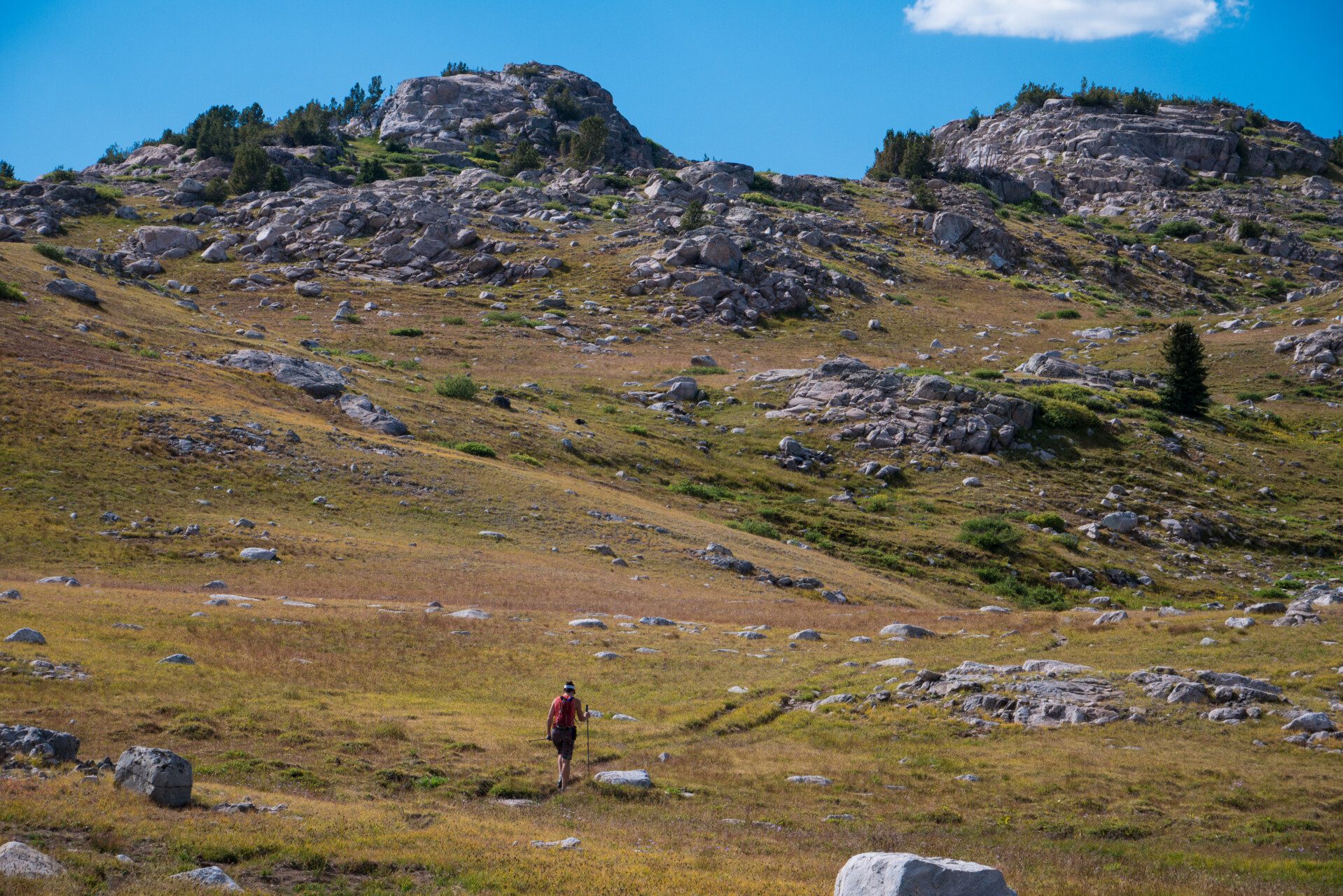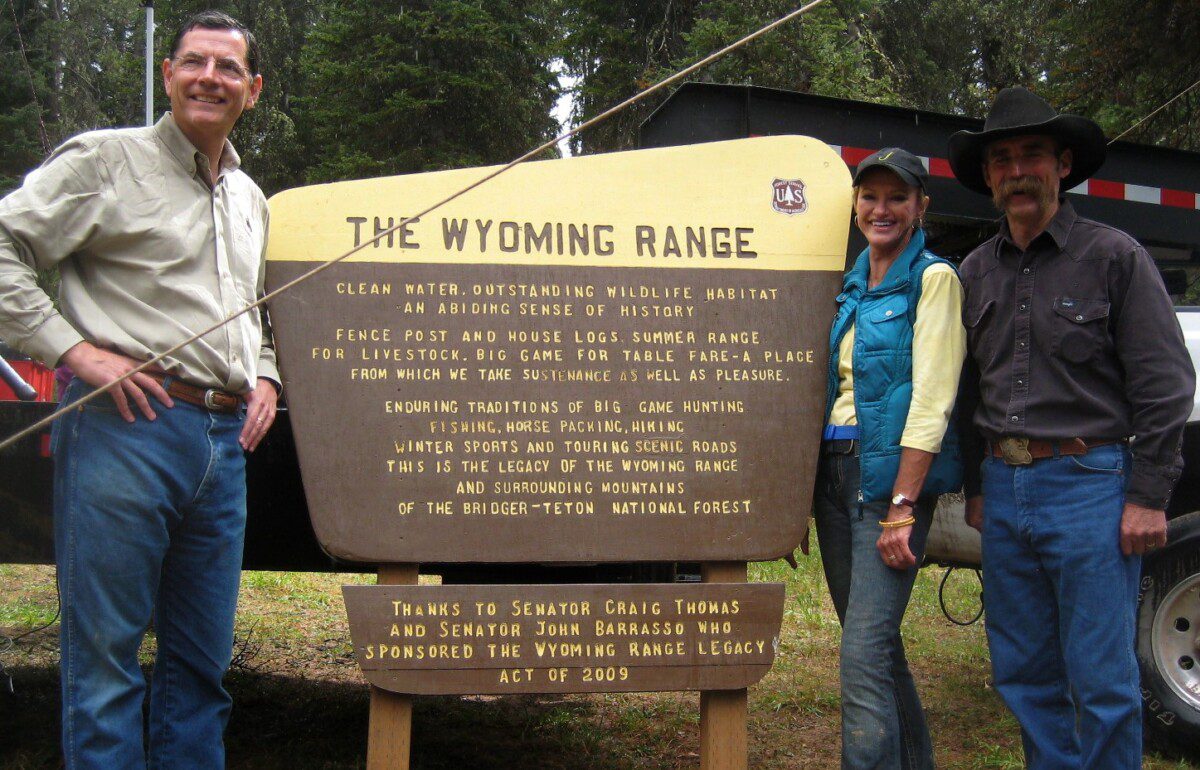Finding your own beautiful places—rather than rely on social media—benefits your brain, the landscape and local wildlife.
“My thinking changes when I step off the trail. I become more in tune and way more focused. I have renewed energy. For me, getting off the trail and away from what I know is where the fun really starts.”
-Tom Turiano, who has been exploring and guiding in the mountains and wilderness of the Greater Yellowstone Ecosystem for 38 years and is the author of the 2003 book “Select Peaks of Greater Yellowstone.” “
There are times when it is irresponsible and harmful to leave trails—cutting a developed trail’s switchbacks can cause erosion and trample vegetation, for example—but going off-trail, where appropriate, can offer significant benefits. (To learn more about recreating responsibly, including when it is and is not appropriate to go off trail, go here.)
“There will be elements of your experience that will be better than if you just hike to the place you saw tagged on Instagram,” says Hank Williams, an explorer for 40+ years of the Wind River Mountains, one of five mountains ranges that is part of the Bridger-Teton National Forest, and home to one of the BTNF’s three wilderness areas. The Winds are also home to 19 of Wyoming’s 20 tallest mountains and more than 100 glaciers (covering about 10,000 acres, making the Winds the most ice-covered mountain range in the Lower 48 states), 800 miles of trails, and 1,300 named lakes.

“I grew up thinking that being able to explore and discover the Winds—look at a lake on a topo map and figure out how to get there—was so special, but it seems that most visitors aren’t taking advantage of that anymore,” says Williams, a founder of Wind River Wilderness Alliance, a volunteer group working to educate and empower visitors to the Bridger Wilderness and to mitigate backcountry recreational impacts in the area. (Wind River Wilderness Alliance is one of the many partner organizations of Friends of the Bridger-Teton.) “Get off the beaten path and you’ll experience wildlife and solitude and have peace and quiet to a much higher degree when you avoid typical high use areas,” Williams says.
Amy McCarthy has been exploring the landscape of the Greater Yellowstone Ecosystem, of which the Bridger-Teton National Forest is part, for 30 years. She says she started off by doing “every single hike” in Becky Woods’s popular 1996 book “Jackson Hole Hikes.” “I don’t think any of those aren’t on a trail,” McCarthy says. “And then I started getting curious about peaks and places I’d see from these hikes. It is a little intimidating to step off the trail, but there is just so much to do and see here. One of the things I love about the Greater Yellowstone Ecosystem is that every time I go out hiking, scrambling, or climbing I come back with more places I want to explore. You can set yourself down almost anywhere in the ecosystem and have this 360 degree panorama of opportunity and adventure.” McCarthy worked one season at McMurdo Station in Antarctica. Here she says she could look 360 degrees “and it was stunning, with beautiful mountains and a volcano, but you weren’t allowed to access any of those places. In the [GYE] you can be on a mountain or down in a valley and look all around and have the opportunity to explore pretty much everything you see. It’s really special.”
Getting off the beaten path is also good for your brain. In his 2016 book, “Finding North: How Navigation Makes Us Human,” New York University Professor George Michaelson Foy makes the case that feeling lost and learning how to navigate unknown-to-us areas helps us grow as people and are even essential parts of humanity. Foy goes even further, looking into the potentially damaging effects reliance on GPS and other passivity-inducing devices can have on our brain functions. “Robotic reliance on GPS-type electronic aids, and associated disuse of the navigational centers in our brain, increase our likelihood of contracting neurological diseases like Alzheimer’s and dementia, according to researchers such as Veronique Bohbot at McGill (University),” Foy wrote.
There’s no doubt that GPS devices can be life saving, but Foy makes the case for using them only when necessary. Instead, he writes that we should actively navigate, using “dead reckoning,” the reasoning-based form of navigation that humans have used to explore the world for millennia, and maps. GPS may accurately get us to a location, but when we get there it’s likely we have no idea where we are.

Thinking for yourself and staying away from Instagram-famous spots also benefits wildlife and the landscape. A 1995 study by evolutionary biologist Dr. Karen Losos surveyed the factors driving the decline of species listed as threatened and/or endangered under the Endangered Species Act. Dr. Losos found that outdoor recreation was the second leading cause of species extinctions—water development was first—on public lands. More recently, in 2016, researchers at Colorado State University reviewed dozens of studies from around the world on the harmful ecological and environmental impacts of outdoor recreation. Their conclusion? “Protecting biodiversity from potentially harmful effects of recreation is a primary concern for conservation planners and land managers.”
As far as helping the landscape, stories like “How Instagram Ruined the Great Outdoors,” “Is Geotagging on Instagram Ruining Natural Wonders? Some Say Yes,” and “Loved to Death: How Instagram Is Destroying Our Natural Wonders” have appeared, respectively, in The New Republic, The New York Times, and TheRinger.com in recent years. And these are just the tip of the iceberg. It took .47 seconds for a Google search of “is instagram ruining the outdoors” to come up with about 725,000 matches.
How can social media harm the landscape? Delta Lake, in Grand Teton National Park, which neighbors the Bridger-Teton National Forest, was visited by only one or two groups a day as recently as 2015. There was a hiking trail maintained by GTNP to within a mile of the lake, but the final push to the lake was an adventure in bushwhacking. By 2018, thanks to thousands of photos of it (Disappointment Peak and the Grand Teton rising just beyond its clear, emerald waters) on Instagram, Delta Lake was a social media star visited by upwards of 100 people a day. All of this foot traffic tramping through the forest created an unofficial trail that is now causing erosion.
In the Wind Rivers, Williams and the Wind River Wilderness Alliance have data showing that between 70 and 80 percent of people visit the same 5 percent of the range. “Even if everyone is practicing Leave No Trace principles, this use far exceeds the capacity of the landscape,” Williams says. “I think people have the impression that if they don’t go to the spots they see on social media the range has nothing to offer. The whole range is beautiful; I’ve seen a lot of it in my 40 years exploring there, and there is not a place I wouldn’t enjoy going and seeing twice.”



